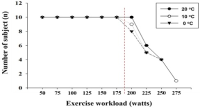
Purpose This study aimed to investigate the effects of acute cold stress (10℃, 0℃) compared with ordinary temperature (20℃) on exercise performance and physiological response at rest and during exercise. Methods A total of 10 healthy men (21.55 ± 2.16) were selected. In each environmental condition (20℃, 10℃, 0℃), the three testing order was randomly selected at crossover, and there was a week interval between the graded exercise test (GXT). On the testing day, they remained resting for 30 min in each environmental condition. Dependent variables (body temperature, energy metabolism parameters, skeletal muscle oxygenation profiles, and exercise performance parameters) were measured at rest and during GXT. Results In body temperature, at each environmental condition, there was a significant decrease (p<.05) at 10℃ and 0℃ compared with 20℃ after exercise, and in the difference depending on the environment at rest. After exercise, the body temperature significantly decreased (p<.05) in proportion to the decrease in temperature. There was no difference in heart rate and blood lactate level in energy metabolism, and the respiratory exchange ratio was significantly higher (p<.05) at 0℃ than 20℃. Minute ventilation (VE), oxygen uptake (VO2), and carbon dioxide excretion (VCO2) were significantly lower (p<.05) at 0℃ than 20℃ and 10℃ at various exercise load. All skeletal muscle oxygenation profiles did not show significant changes at rest and during exercise. In exercise performance, maximal oxygen uptake was significantly lower (p<.05) at 0℃ than 20℃, and exercise time to exhaustion was also significantly lower (p<.05) at 0℃ than 20℃ and 10℃. Conclusion Acute cold stress induces deterioration of exercise performance via a decreased body temperature and an increase in VE, VO2, and VCO2 during the same exercise load. In addition it was confirmed that this phenomenon was more prominent at 0°C than at 10°C when compared to 20°C.

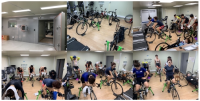
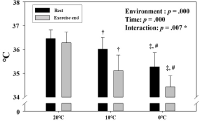

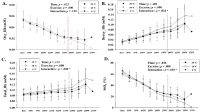
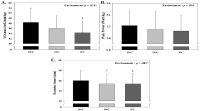
PURPOSE This study sought to investigate the effects of passive warm-up on flexibility, exercise performance, and lactate oxidation rate in track and field athletes. METHODS A total of eight male athletes with more than three years of athlete experience were recruited as participants, and passive warm-up (PW) and active warm-up (AW) treatments were conducted in a single-group crossover study design. The participants performed thermal stimulation at 40°C for 20 minutes as a PW and performed a 60-70% HRmax cycle as an AW. Flexibility and exercise performance were measured after each treatment. Anaerobic power was measured using the Wingate test, and lactic acid concentration was measured. RESULTS Body temperature significantly increased in both PW and AW, and no significant difference was observed in exercise performance between treatments. Flexibility and lactic acid oxidation rate were significantly higher in PW than in AW. CONCLUSIONS In track and field sprinters, PW did not exhibit any significant difference in anaerobic power and exercise performance compared to AW even though no physical exercise was performed, and PW was effective in body temperature, lactic acid oxidation rate, and flexibility. PW suggests the possibility of replacing AW.
The purpose of this study was to examine whether the difference between ingestion of nutrition supplements for 8 weeks can regulate physical activities and fatigue recovery. Fifty one middle-aged women participated in this study and were divided into placebo, ingestion of 20g energy supplement and ingestion of 40g energy supplement groups. Energy supplement mainly consists of carbohydrates and proteins. All subjects take in this supplement one time per a day for 8 weeks. Physical activity and fatigue recovery were measured before and after ingestion of energy supplement for 8 weeks by using the Wingate anaerobic and a blood tests. In the Wingate anaerobic test, the peak power(p<.01) and average power(p<.05) were significantly increased in ingestion of 20 and 40g supplement groups compared to the placebo group. Although concentrations of lactate and growth hormone in the blood didn’t show a significant differences among groups, blood concentrations of cortisol and ammonia were further enhanced in ingestion of 20 and 40g supplement groups compared to the placebo group(p<.001). The results of present study provide evidence that energy supplement mixed with carbohydrates and proteins may be effective to increase physical activity as well as to reduce blood concentration of fatigue-related factors after exercise.
PURPOSE Using GPS data from actual field hockey matches, this study examined the effects of position and substitution time on the physical performance of elite female players. METHODS From 25 matches played in 2023, data involving 26 players were collected. Players’ positions were classified as forwards (FW), midfielders (MF), and defenders (DF). Substitution times were segmented into 5, 10, and 15 minutes, respectively. A two-way ANOVA was employed to analyze movement patterns across different exercise intensities as influenced by player position and substitution time, followed by Bonferroni post-hoc tests for further detailed analysis. RESULTS Analysis revealed that both position and substitution time significantly affected exercise intensity. Notably, at a substitution time of 5 minutes, substantial differences were observed in high-intensity movements, including the distance covered at high-intensity and the frequency of high-intensity efforts. Furthermore, the substitution time’s impact was particularly pronounced among forwards and midfielders. CONCLUSIONS Findings suggest that shorter substitution times can enhance players’ active movement, thereby supporting maintenance of tactical adjustments and positively influencing overall performance. Implementing shorter substitution times could be particularly beneficial for optimizing team performance, especially for players in forward positions.
PURPOSE The purpose of this review was to summarize the current knowledge on the trends in athletes’ health problems (and their preventive strategies) caused by low energy availability (LEA) and relative energy deficiency in sports (RED-S). METHODS In this narrative review, we summarized previous studies by searching the literature in the PubMed, Google Scholar, and Science Direct databases. RESULTS Energy availability (EA) refers to the amount of energy from caloric intake used for exercise, and a LEA is considered as a surrogate marker of RED-S. In several previous studies, chronic low energy availability in female athletes has been reported to cause health problems such as endocrine dysfunctions, immunosuppression, and psychological disorders, and to also affect the hypothalamic-pituitary-gonadal (HPC) axis and bone health. Moreover, it has been suggested that an increase in injury risk and a decrease in exercise performance may occur. CONCLUSIONS Since it can be difficult to recover from the health deteriorations caused by RED-S, early detection (of related signs and symptoms) and prevention are very important. Therefore, athletes, coaches, and parents need to develop educational programs that ease the recognition of the problems caused by various symptoms related to RED-S and promote educational interventions.
PURPOSE The purpose of this study was to investigate whether foam roller, preexhaustion, and static stretching had any effect on isometric muscular endurance of the finger flexors and climbing performance in sport climbers. METHODS Nine sport climbers who were able to perform at a climbing difficulty of 5.11d, were included in this study. Warm-up exercise consisted of myofascial release, pre-exhaustion exercises, and static stretching. Grip and back strengths were measured for muscular strength, and isometric muscular endurance of the finger flexors was measured as the time spent hanging on each hold according to the angle of the elbow joint. Repeated measures of ANOVA were performed to confirm the difference in treatment, and a significant difference between groups was confirmed by contrast test. RESULTS Myofascial release, pre-exhaustion, and static stretching before climbing did not affect muscle strength. However, the static stretching exercise significantly decreased isometric muscle endurance of the finger flexor at 90° open hold, and the pre-exhaustion exercise significantly decreased the hanging time at 180° crimp and slope grips. There was no effect on climbing performance according to the type of warm-up exercise. CONCLUSIONS Our findings suggested that various warm-up exercises did not directly affect muscle strength, muscular endurance, and climbing performance in sport climbers. Thus, we suggest that future research on complex warm-up exercises considering climbing postures should be conducted.
PURPOSE This study investigated the effects of 12 weeks of clubbell and stepbox training on physical fitness, badminton skills, and fatigue in male badminton, grade A (top grade) club members aged 20–30s, with over 5 years’ experience. METHODS Participants in a training group (TR: n=15) engaged in 12 weeks of clubbell and stepbox circuit training involving maximum 8–12 reps of clubbell exercises and stepbox exercises at over 77% of HRmax for 50–55 min/sessions three times a week. Participants in a control group (CON: n=15) maintained their normal lifestyle pattern during the same intervention period. Dependent variables were measured and compared using repeated measures two-way ANOVA. RESULTS The main results were as follows: 1) The groups showed no significant differences in body composition. 2) Regarding physical fitness, VO2max, relative peak power, relative average power, grip strength, push ups, repeated jump squats, SSPT (seated single-arm shot-put test), 10 m sprint, and hexagon agility increased significantly in the TR, while push ups decreased significantly in the CON. 3) As for badminton skills, forehand clear accuracy, badminton agility, badminton endurance, and smash speed increased significantly in the TR. Forehand clear accuracy decreased significantly in the CON, but badminton agility and smash speed increased significantly. 4) The groups showed no significant differences in fatigue. CONCLUSIONS In male badminton club members aged 20–30s, 12 weeks of clubbell and stepbox circuit training effectively improved physical fitness and badminton skills. However, lack of any improvement in body composition and fatigue warranted further research in these areas.

Purpose In general, motor imagery and action observation have been distinguished from each other. Recently, several studies demonstrated that combined approach to motor imagery and action observation can be more effective in motor learning. The present study examined the effects of observation learning combined motor imagery and action observation during acquisition basketball shooting skills. Methods We divided with control group, action observation group and observation learning group combined mental image and action observation in the three middle school. Action observation group provided the action observation program, and observation learning group was performed observation learning combined mental image and action observation training. All groups were perform basic basketball skills. Experimental intervention was performed for 10 weeks, and data analysis was performed 3 groups × 2 time repeated ANOVA. Results The results indicated that all group were improve after intervention, and subjects who participated in combined mental image and action observation was significant in the interaction effect on the front shoot. Moreover, the interaction effect on the motor imagery ability was significant. Conclusions These findings suggest that the use of observation learning combined mental image and action observation strategy potentially optimizes motor skills performance and motor image ability by incorporating motor imagery, especially when observing movements with intent to imitate.

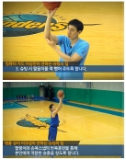

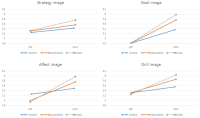
Purpose The purpose of this study was to determine the effectiveness of six-weeks intermittent hypoxic training at 3,000 m hypobaric hypoxic condition on aerobic and anaerobic exercise capacity in competitive swimmers. Methods South Korean swimmers (n=20) were randomly assigned into training at sea-level (n=10, intermittent normoxic training group; INT) and training at 526 torr corresponding to 3,000 m hypobaric hypoxic condition (n=10, intermittent hypoxic training group; IHT). The participants completed an aerobic continuous treadmill training (30 min) within 80%HRmax and anaerobic interval bicycle training (10 times; 2 min of exercise and 1 min of rest) for 30min within 90%HRmax in each environment. We compared their aerobic and anaerobic exercise capacity before and after six-weeks of training. Exercise frequency was 1 hour, 3 days per a week, and during 6 week. Results In aerobic exercise capacity, PWC at 75%HRmax, estimated VO2 max, and exercise time were increased by training in only the IHT group. Estimated VO2 at 75%HRmax was increased by training in both groups, but presented a larger increase tendency in the IHT group compared with the INT group. In anaerobic exercise capacity, peak anaerobic power and fatigue index were increased by training in only the IHT group. Blood lactate level after wingate test were decreased by training in both groups, but the IHT group have a lower blood lactate level in after training compared with the INT group. Conclusion In our study, we did not measure to various dependent variables for support to enhancement of aerobic and anaerobic exercise performance. However, these results showed that the IHT method may be effective in improvement of exercise performance in competitive swimmers who participates in a variety of events from short to long distance.
PURPOSE This study aimed to compare body composition, physical fitness, maximum muscle strength, and blood lactate concentration according to the level of aerobic capacity in Keirin cyclists. METHODS Forty-four Keirin cyclists participated in this study and were divided into three groups: the top 20% VO2max group (TG, n=9), the middle 20% VO2max group (MG, n=9), and the low 20% VO2max group (LG, n=9). The study measured body composition, physical fitness, maximum muscle strength, and blood lactate concentration in Keirin cyclists. Differences between groups were determined using one-way ANOVA analysis. RESULTS Body weight, percentage of body fat, and body mass index were significantly higher in the LG than in the TG and MG. The vertical jump and maximum muscle strength were significantly higher in the TG and MG than in the LG. Additionally, blood lactate concentrations immediately after exhaustive exercise and during the 5-minute recovery periods were higher in the LG than in the TG and MG. Moreover, the time to exhaustion, HRmax and maximum power were the highest in the TG. CONCLUSIONS Our findings suggest new information that levels of aerobic capacity in male Keirin cyclists might be a crucial predictor of cycling performance and recovery ability.